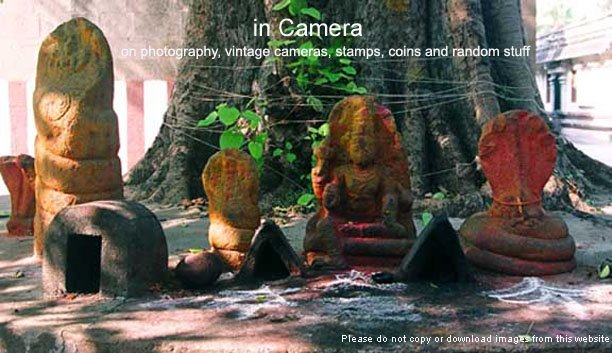After quite a long time tried my hand at black and white photography -- not the digital version but good `old' black and white film photography (stress on old because what got me going was a roll of neopan that had been in the refrigerator for several years and was well past its best-by date) followed up with processing at home with D76 chemicals.
Digital came in handy for scanning and getting the image on to CD.
The topic is ofcourse an old favourite -- the festival at the Parthasarathy Temple Triplicane. Last month when the festival was on I decided to use the film just on a whim and rediscovered the joy of b&w processing.
.jpg)

.jpg)


4 comments:
Hi Balaji,
your photos are looking great and gives me feeling that i am looking at the very age old photos.
I heard that the processing of B&W film roll is costlier than the colour one. Is it true?
PS: Will you please publish the literature on how to develop the film roll?
Thank You, Sathiyan.
Yes. B&W processing is expensive if you get it done at a lab. In Chennai it is around Rs 150 a film (compare that to colour film - Rs 20) and work is not guaranteed.
It is much cheaper to do it yourself if you are interested. It has been some years since I bought chemicals (apart from the film, the chemicals were also old stock) and am not able to recall the price. But for less than Rs 500, with the smallest retail pack of chemicals, you can buy enough chemicals to develop 50 rolls of film. Of course we will not be using up so much film (unless you plan and accumulate rolls) so some chemical will go waste.
As for the recipe - it quite easy. I suggest you go on the Internet or pick up a good book on b&w processing.
You will need a developer tank with spirals to load the film; A changing bag if you can get one, measuring cylinder 1 litre capacity, a thermometer to measure up to 100 degrees C.
Learn the knack of loading film from the spool to the spiral, a process that has to be done in total darkness or by feel alone if you get a changing bag.
Recipe:
I go by the book, except for standardising processing time which has to be done individually.
I used D76 chemicals from Kodak.
Recipe and timing:
Stock solution of developer as per instructions on the package - dissolve two chemicals at 55 degrees C in 2.5 litres water. Prepare stock a day before use and store in dark bottle.
For developing, dilute the required quantity (200ml) 1:1 with water to get about 400 ml to process one roll of film.
Pour developer (maintained at 20 degrees C) into the tank (with film loaded on to the spiral) allow 8 minutes with regular agitation.
(I use a water bath - a 5 litre plastic tub with ice cubes - to maintain the temperature; How many seconds you agitate and the frequency has to be maintained uniformly.)
Then pour out the developer solution - water wash and add fixer (I use Agifix)5-6 minutes.
Wash film thoroughly in running water and hang it out to dry in dust free environment (bathroom).
(To decide on development time use cut film about 10 frames a bit and process each for about 7.5, 8, 8.5 minutes to decide on the ideal time.)
Have Fun.
But like I said any basic book on B&W processing or the Internet is a good source and will teach you better.
super balaji neenga. ennalaamo pannareenga.
Amaam. Epanaachum thonuchunaa indhamadhiri tinker pannikittu irrupaen.
Sila-time veetla solra madhiri idhaelaam vaendatha vaellai-nnu thonum. Irrundhalum vidarathu illai.
Post a Comment